Let's talk Munchkins
The Munchkin cat is playful and highly sociable, thriving in the company of others, including children, seniors, and dogs. Curiosity makes these sweet felines stand apart from other cats. You may find your Munchkin sitting up on their hind legs like rabbits to get a better view of something that has caught their attention. And whilst they may not be expert high jumpers, they use their intelligence to find strategic ways to access high perches in smaller steps.
Official name: Munchkin
Other names: Munchkin Shorthair, Munchkin Longhair
Origins: United States
Nivel de muda de pelo
3 out of 5Nivel de energía*
5 out of 5Compatibilidad con otra mascota
5 out of 5¿Clima cálido?
1 out of 5¿Mascota familiar?*
4 out of 5
| Macho | Hembra |
|---|---|
| Altura | Altura |
| 12.7 - 17.8 cm | 12.7 - 17.8 cm |
| Peso | Peso |
| 3 - 5 kg | 2 - 4 kg |
| Life Stage | |
|---|---|
| Gatito en desarrollo | Adulto |
| 4 to 12 months | 1 to 7 years |
| Mayor | Adulto mayor |
| 7 to 12 years | From 12 years |
Nivel de muda de pelo
3 out of 5Nivel de energía*
5 out of 5Compatibilidad con otra mascota
5 out of 5¿Clima cálido?
1 out of 5¿Mascota familiar?*
4 out of 5
| Macho | Hembra |
|---|---|
| Altura | Altura |
| 12.7 - 17.8 cm | 12.7 - 17.8 cm |
| Peso | Peso |
| 3 - 5 kg | 2 - 4 kg |
| Life Stage | |
|---|---|
| Gatito en desarrollo | Adulto |
| 4 to 12 months | 1 to 7 years |
| Mayor | Adulto mayor |
| 7 to 12 years | From 12 years |
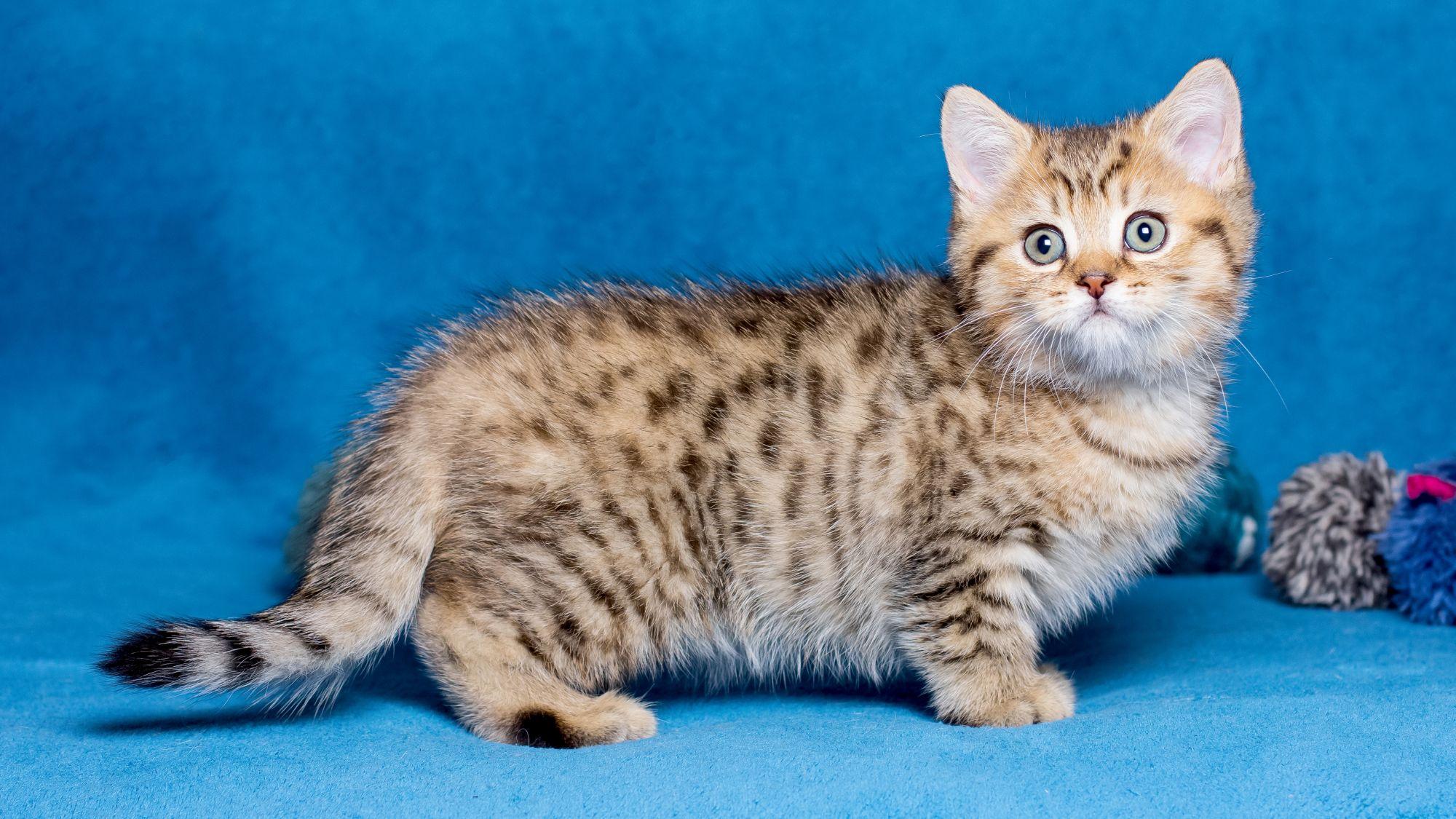
Get to know the Munchkin
All you need to know about the breed
What’s so distinct about the Munchkin? In addition to their endearing personality, this relatively recent breed is known for their short legs (earning them the nickname of the Dachshund of the cat world), their defining physical characteristic. Even among other small cat breeds, the Munchkin stands apart. Why? Their frame matches the size of more normal adult cats in every way except their legs, which are approximately 3 inches shorter than the average cat.
The breed’s short legs are a result of a natural genetic mutation and do not have a negative incidence on their mobility. In fact, this is a cat that is extremely active, energetic, and playful. Allow your Munchkin to play on their own and you’ll observe them racing around the room at high speeds (as a result, they need ample amounts of space to run and frolic).
In personality, Munchkin cats are social butterflies, and very affectionate. Their loving temperament comes to life as much with their human companions as with other dogs and pets. Whether you live in an apartment or in a house, this is a breed that adapts well to wherever you’re living. As long as you challenge their intelligent minds with games and puzzle toys and give them room to sprint, jump, and explore.
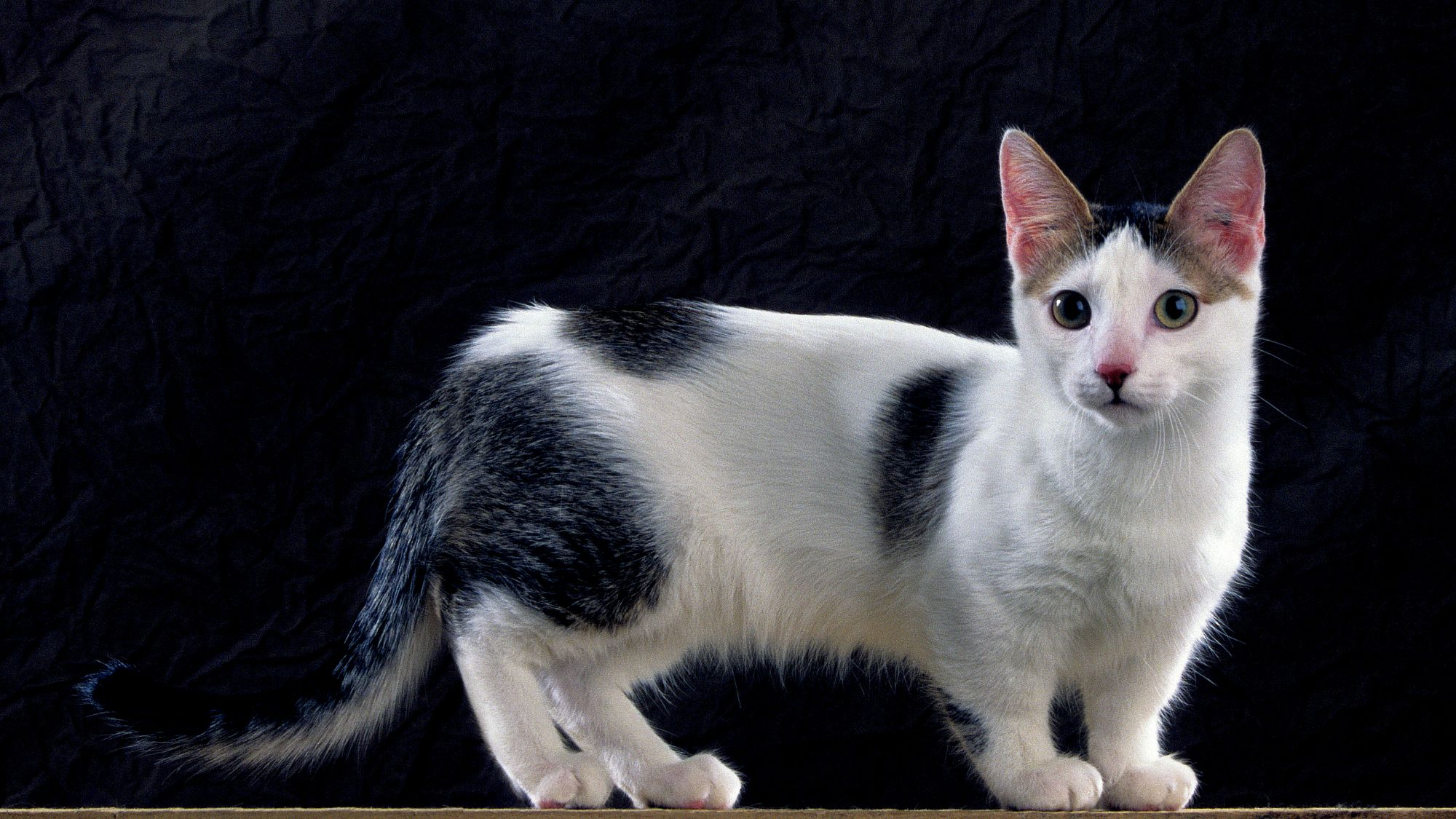
2 facts about Munchkins
1. A name from Oz
What’s in a name? In this case, the Munchkin draws their name from the famous characters in the book (and film) The Wonderful Wizard of Oz by L. Frank Baum.
2. Have (short) legs, will jump
There is no jumping challenge the Munchkin won’t attempt, despite their short limbs and small stature. Be sure to have perches available to your Munchkin as well as cat trees with various levels to encourage safe jumps and above ground exploration.
History of the breed
The Munchkin, known for their ultra-short legs, emerged from a natural genetic mutation. Short-legged cats have appeared throughout history in different places, from the UK to Russia. There was a line of short-legged cats in the UK in 1944 but they disappeared during the Second World War. Similar cats have also been seen in Russia and in different parts of the United States.
But it was a pregnant stray in Louisiana that put the breed on the map. In 1983, music teacher Sandra Hochenedel rescued a pregnant short-legged cat named Blackberry in her hometown of Rayville, Louisiana and sent two kittens from the cat’s litter to doctor and geneticist Dr. Solfeig Pfleuger for evaluation. Showing no deformities and realising the mutation was natural, they used these kittens as the foundation for today’s Munchkin cats.
The Munchkin was developed within The International Cat Association (TICA) beginning in 1994 and, after years of breeding with observation by the TICA genetics committee, they eventually obtained championship status in 2003. The breed remains extremely rare and controversial—some question the ethics of intentionally breeding a cat with a genetic deformity. Case in point: The Cat Fancier’s Association, as well as other cat organisations, still does not recognise the Munchkin.
From head to tail
Physical characteristics of Munchkins
1.Ears
2.Head
3.Body
4.Tail
5.Coat
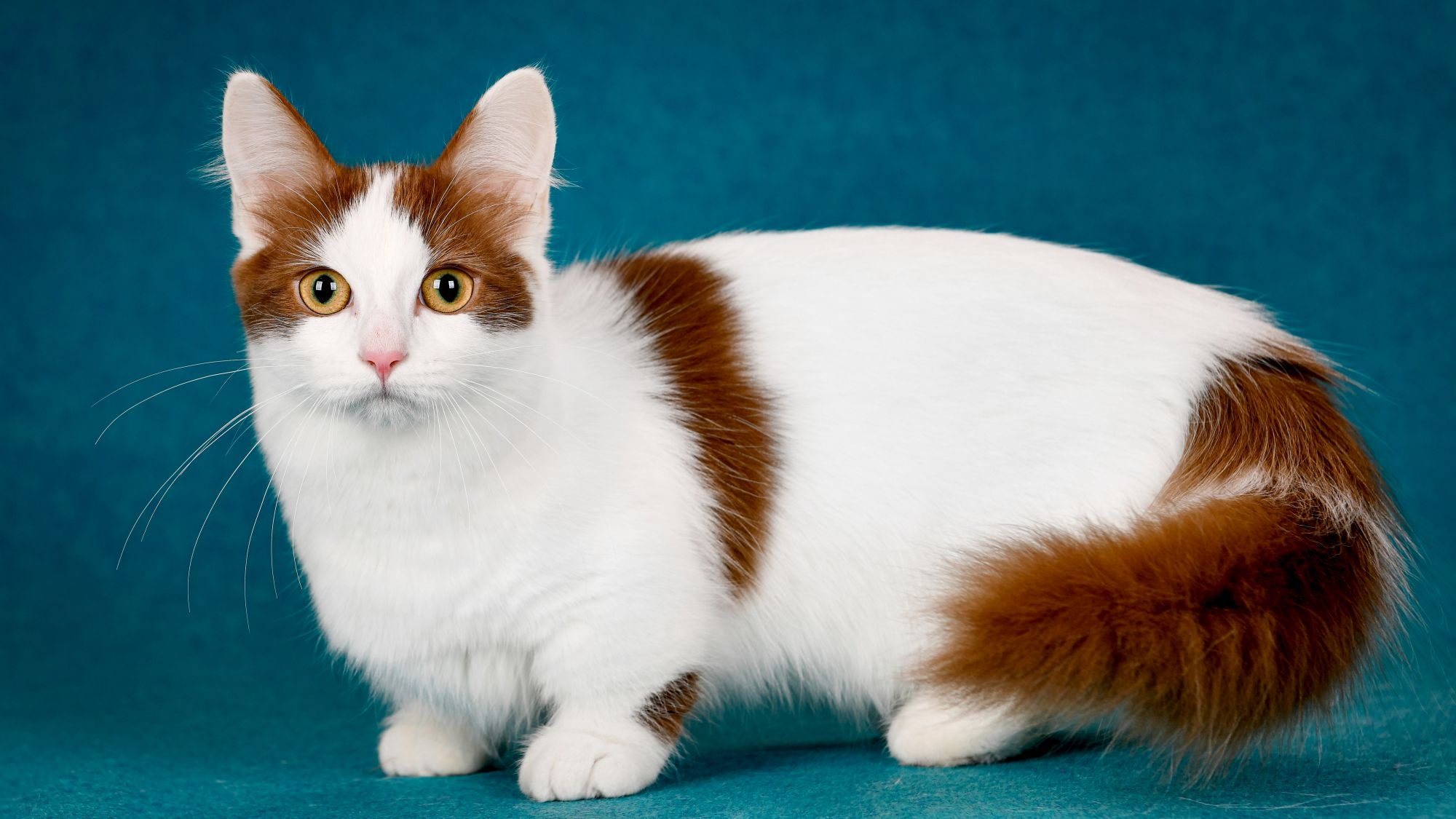
Things to look out for
From specific breed traits to a general health overview, here are some interesting facts about your Munchkin
Very healthy but may be prone to weight gain
Overall, the Munchkin is a very healthy breed with no predisposition to illness. However, due to their very short legs, it is important to keep your Munchkin lean to avoid obesity. Some Munchkin cats may also develop lordosis, a condition in which the cat’s spine does not grow as it should or pectus excavatum, a condition wherein the chest is flat or concave. It is advisable to speak with your vet about treatment and weight management food to make sure your cat can live the healthiest life possible.
Hoarders of the cat world
Missing something? Your Munchkin cat may have snatched it. That’s because the breed has been reported to exhibit hoarding tendencies, much like the magpie bird. They find your shiny treasures and stash them for later. For the safety of your valuables and your Munchkin, it is advised to keep precious objects out of their reach.
Healthy diet, healthier cat
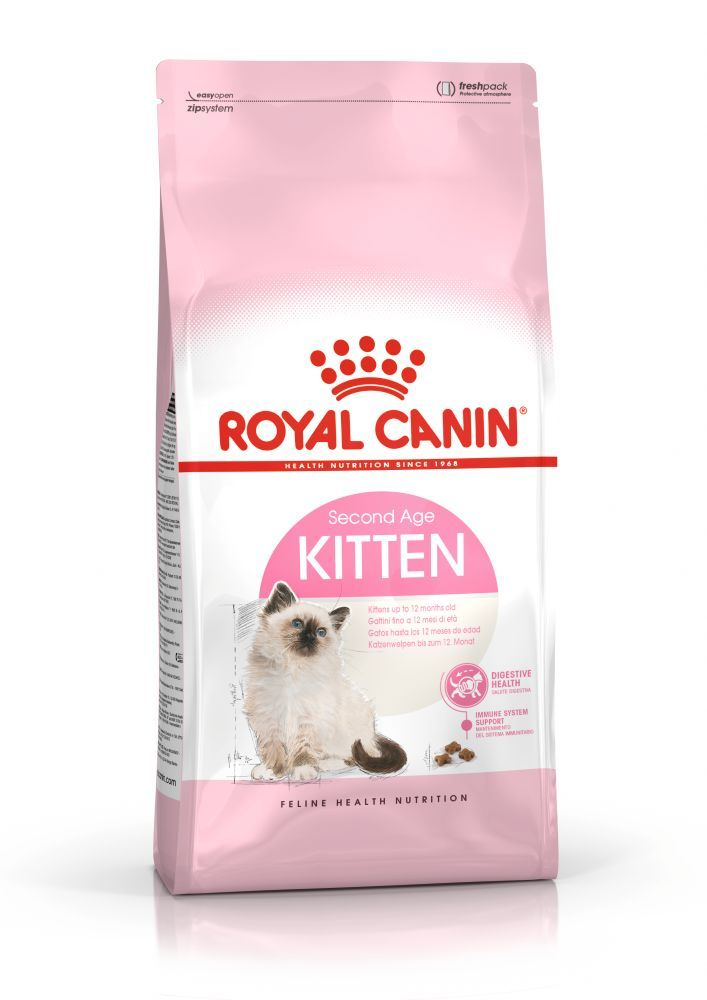
Tailored health nutrition has a fundamental role to play in maintaining the health and beauty of a cat. Food provides energy to help with vital functions and a complete nutritional formula for cats should contain an adapted balance of nutrients. Feeding them in this way will offer a diet that’s neither deficient nor excessive, both of which could have adverse effects on your cat’s health. Clean, fresh water should be available at all times to support good urinary regularity. Cats are also naturally adapted to eating small servings—between 7 and 20 times a day (16 on average). Giving them the recommended daily ration of kibble once a day will let the cat regulate their own consumption; ironically, when they have only one or two servings a day, their weight increases more than a cat who eats on demand.
Consolidation and Harmonisation - From 4 Months to 12 Months
From the fourth month, a kitten’s growth slows down, so a food lower in fats is recommended. This is particularly important after a cat is sterilised. Between 4 and 7 months, a kitten’s milk teeth fall out and are replaced by permanent ones. When the adult teeth have come through, a kitten needs to eat kibble that’s big enough so they’re encouraged to crunch. Until they’re 12 months old, a Munchkin kitten’s immune system is still gradually developing. A complex of antioxidants, including vitamin E, can help support their natural defences during this time of big changes, discoveries, and new encounters. The digestive system matures progressively, with digestive aptitudes reaching full maturity toward twelve months of age. A cat is then able to consume adult food.
The following recommendations are for healthy animals. If your cat has health problems, please consult your veterinarian who will prescribe an exclusively veterinary diet.
When choosing food for Munchkins, there are factors to consider: Their age; individual sensitivities; their lifestyle, which impacts their level of activity substantially; and their physiological status, such as sterilisation, a potential factor in weight gain. If the cat has outdoor access, the changing seasons also play a role, especially when it comes to moulting, which happens twice a year.
Age
Age is a factor in terms of a cat’s energy needs, especially in their early and the later years. An 8-week-old kitten consumes three to four times more energy per kilo than an adult. A cats’ appetite is reduced as they grow older due to dental sensitivities or a lessened perception of odours and flavours.
Growth Phase
Growth is an essential stage in a kitten’s life. It is a time of big changes, discoveries, and new encounters. When it comes to their energy, protein, minerals, and vitamin requirements, a kitten’s are much greater than those of an adult cat. They need energy and nutrients to maintain their body, but also to grow and build it. A kitten’s growth comes in two phases:
Construction - From Birth to 4 Months
Weaning is the transition a kitten makes from liquid – or maternal milk – to solid food. This period naturally corresponds to the time when they cut their milk teeth, at 3 to 6 weeks old. At this stage kittens are not yet able to crunch, so a soft meal (rehydrated kibble or an adapted wet food) helps facilitate the transition between liquids and solids. Between 4 and 12 weeks after birth, the natural immunity a kitten receives from the mother’s colostrum – or first milk – decreases while the kitten’s immune system gradually develops. This critical time, called the immunity gap, requires a complex of antioxidants, including vitamin E, to help support their natural defences. Kittens go through an intense and particularly delicate period of growth during which they’re prone to digestive upset. Their diet at this time should not only be rich in energy to meet their essential growth needs but should also contain highly-digestible protein for their digestive system that’s still maturing. Prebiotics, such as fructo-oligosaccharides, can also support their digestive health by helping to balance intestinal flora. The result? Good stool quality, all around. The kitten’s food should contain omega 3 fatty acids – EPA and DHA – which helps support the proper neuro-cerebral development.
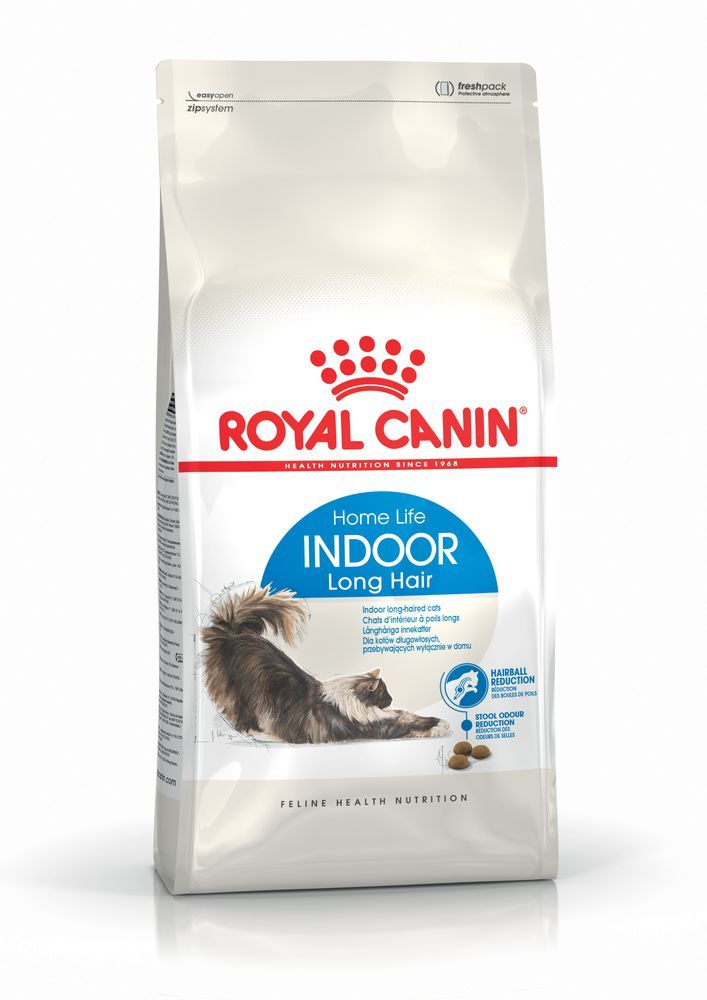
Adult (over 12 months old)
When it comes to their nutrition, the goals for adult Munchkins are:
Contributing to maintaining an ideal body weight by using highly-digestible ingredients and keeping the fat content at a sensible level*, especially for sterilised cats, indoor cats, and strays.
Supporting optimal digestion and balancing intestinal flora by using highly-digestible proteins and prebiotics.
Preserving the health and beauty of the skin and coat with the addition of essential fatty acids, especially EPA and DHA, essential amino acids, and B vitamins.
Maintaining a healthy urinary tract system. Adding fibre to stimulate the elimination of hair that’s ingested during grooming, thanks to selected fibres, in order to help reduce hairball formation.
Supporting daily oral care and hygiene.
Some cats can be fussy eaters so food palatability is key. Exclusive formula and aromas, kibble size, special texture, or a combination of different shapes or textures – with both their dry and their wet food – will help stimulate their appetite.
* Adjusting the energy level of the food to the energy needs of the cat encourages them to regulate their own consumption. Cats usually have more difficulty curbing their appetite if the kibble is very rich in fats.
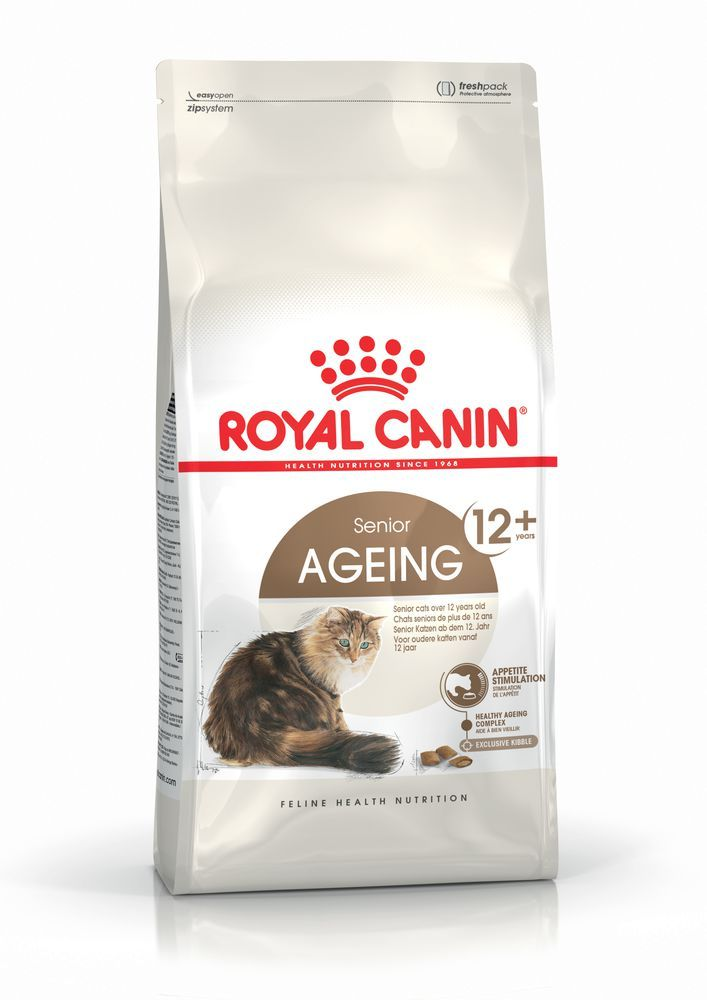
Ageing (over 7 years old)
Healthy nutrition for outdoor cats
Cats that are able to go outdoors spend more energy than those who stay inside. A food that’s more dense in energy is therefore recommended. Increasing the volume of food with a low energy density, such as an indoor cat formula, isn’t a solution for feeding outdoor cats as it can lead to a decrease of the digestive efficiency. Nutrients that specifically support healthy joints can benefit a very active outdoor cat. Select nutrients and antioxidants can bolster the skin barrier to help outdoor cats cope better. Just being outside leaves them open to possibly receiving a small wound or exposing them to harmful bodies, like external parasites.
After 7 years old, Munchkins start facing the first signs of ageing. A formula enriched with antioxidants will help maintain their vitality and an appropriate phosphorous content will support their renal – or urinary – system.
Ageing also means modified digestive capacity. A senior cat – one over the age of 12 – may sometimes have difficulties with absorption, too. To maintain the weight of the ageing cat and prevent any risk of deficiency, they should be given an extremely digestible food filled with essential nutrients.
As they get older, cats increasingly suffer from teeth problems, and in some senior cats, the sense of taste and smell may decline as well, which can lead to a lowered intake of food. To ensure they continue to eat enough, the shape, size, and hardness – meaning texture – of their kibble needs to be tailored to their now potentially more fragile jaw.
Note that the best energy level for any cat still depends on their lifestyle, even those who are ageing. A senior cat that continues to go out regularly will benefit from a diet with a slightly higher fat content. On the other hand, ageing does not reduce an indoor cat’s risk of obesity. Their calorie intake should still be closely monitored. A food with a moderate fat content then may be optimal.
Lifestyle
The energy density of the food should be different for indoor and outdoor cats. Going outside changes a cat’s nutritional as well as their energy needs, the latter of which increase according to the amount of time they spend outdoors, their territory, and the degree to which the climate changes through the year (many outdoor cats become indoor cats during the winter). While a 4kg cat needs around 300 kcal/day if it’s outdoors, the same cat who stays inside won’t expend more than 200 kcal/day—a full third less. What’s more, a sedentary cat that is fed a high-fat, high-energy diet as often as they like is less able to regulate its consumption.
Healthy nutrition for indoor cats
Because an indoor lifestyle often means less exercise (an indoor cat expends a third less than one living outdoors), an adjusted calorie content which meets those reduced energy needs and a diet containing L-carnitine to help promote fat metabolism can help maintain an ideal weight. Avoid feeding them human foods or fatty snacks; instead, reward them with kibble taken out of their daily meals, and strictly follow the feeding guidelines written on the pack to prevent them from gaining weight. Indoor cats spend more time grooming themselves. Selected fibres, such as psyllium, can help to eliminate the hair they’ve ingested, which will reduce hairballs. For Munchkins living mostly indoors, eating highly-digestible proteins will help reduce both the amount of stool and its smell.
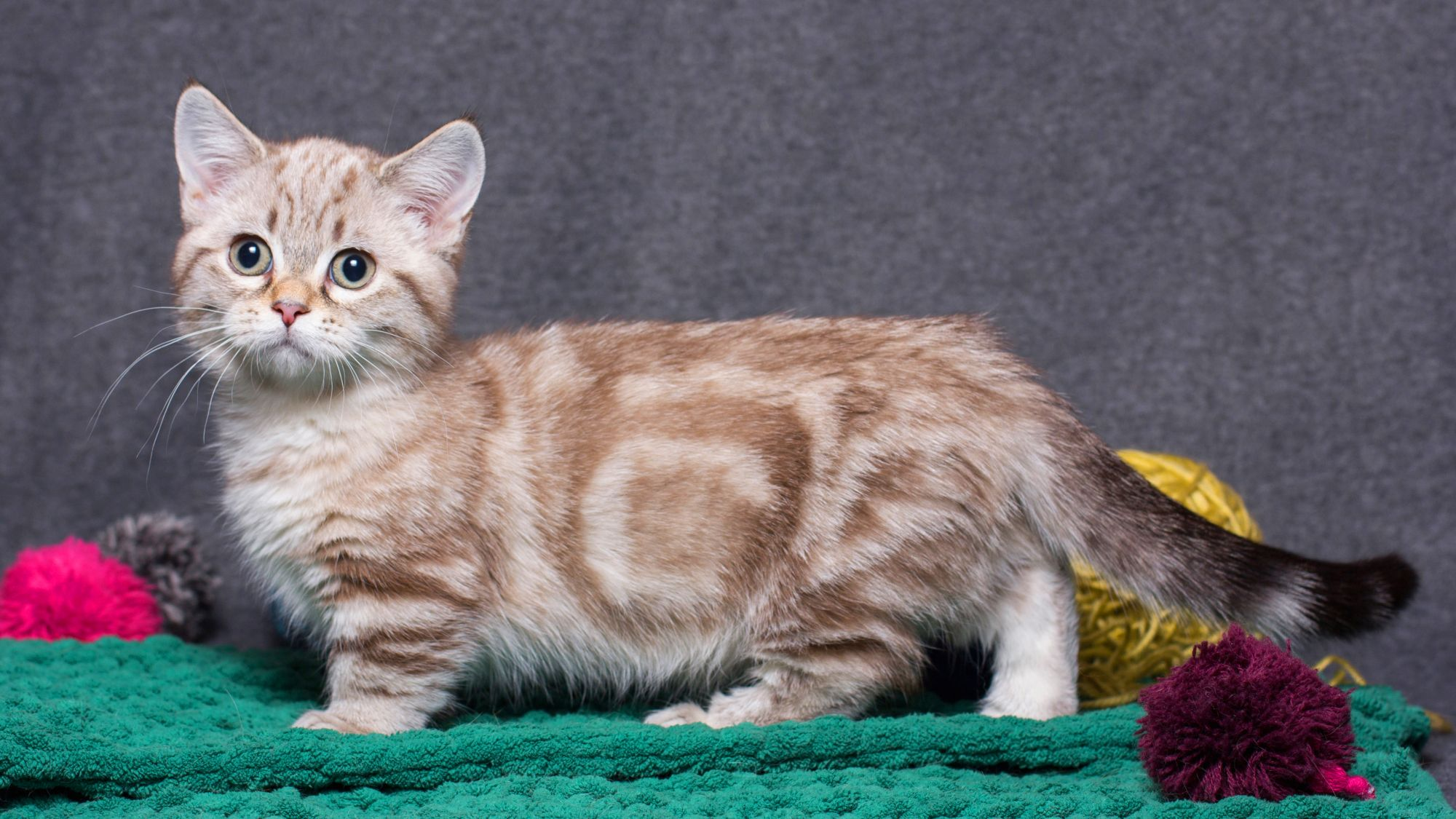
Caring for your Munchkin
Grooming, training and exercise tips
7/7
All about Munchkin
It is impossible to guarantee that any breed will be forever free of health ailments but overall, the Munchkin is a healthy cat that can live up to 15 years. There is a higher possibility that the Munchkin will develop spinal or bone issues linked to their short legs. Be sure to visit your veterinarian regularly for health check-ups.
The cost of the Munchkin varies according to the breeder but given the relative rarity of the breed, they can be expensive. What’s most important is to find a reputable breeder who provides you with health guarantees for your Munchkin.
Suggested Breeds
Read more on this topic
- Veterinary Centers of America https://vcahospitals.com/;
- Royal Canin Cat Encyclopaedia. Ed 2010 and 2020
- Banfield Pet Hospital https://www.banfield.com/
- Royal Canin BHN Product Book
Dale like y comparte esta página